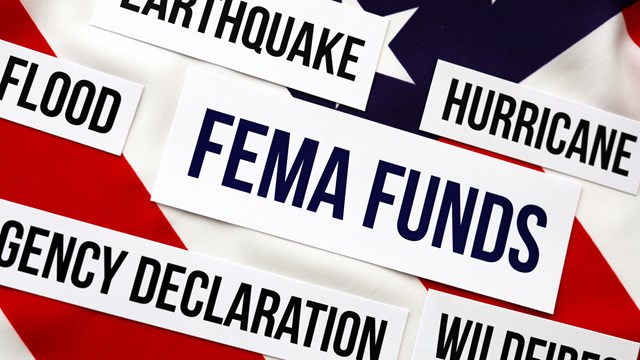Tragedy and crisis seemed to be the theme for 2005, with tsunamis, earthquakes, hurricanes, and mudslides causing havoc and uprooting the lives of millions all over the world. Of course, we’d all like to think that if such an emergency ever hit New York, our city, state and federal governments would be prepared with an efficient and well-tested evacuation plan—but co-op and condo boards should know better than to just rely on that. When it comes to planning for emergencies, most likely it’s your board, management and staff who will be the first responders if a crisis does develop.
That’s why it’s so important that every residential building in the city has an emergency plan in place before an emergency actually happens—and not just for little things like kitchen fires or power outages, but even for the not-so-likely threats of disastrous storms, or even terror-related activities. Whether the emergency is citywide, building-wide, or confined to a single apartment unit, it’s vital that every multi-family building have a thorough, well-thought out plan to deal with the situation and keep everyone in the building safe.
Put it On Paper
“We have a publication called Before Disasters Strike that discusses probably 25 to 30 different types of emergency scenarios,” says Charles Achilles, emergency operations expert for the Institute of Real Estate Management (IREM), an organization devoted to training and educating property managers. “It’s an emergency procedures manual. It lists hurricanes, tornadoes, fire, criminal activity and spilling of human blood, bomb threats, earthquakes, elevator emergencies, medical, flood, severe snowstorms—you name it.”
Before Disasters Strike is one of many publications available to help board/management teams design and outline a solid, workable set of emergency plans for their building.
Of course, emergency plans vary with each property—what works for a 40-story high-rise on the Upper East Side may not be as effective for a five-story garden co-op in Queens. Therefore, it’s vital that managers work with individual boards to devise plans and protocols tailor-made for each building, rather than simply drafting a general, catch-all emergency manual and applying it to very different properties.
“One of the things we suggest is for the managing agent to be put in charge of putting the emergency procedure manual together with help from the building’s board of directors,” Achilles says, “and any other onsite staff would certainly be involved with that as well. The resident manager and maintenance people all have roles to play, depending on the nature of the emergency.”
Another option is the New York City Fire Department. The FDNY can give your board and management a general emergency evacuation manual, which might be a good starting point for developing your own custom procedures. The Red Cross also publishes an array of preparedness documents for families, businesses, and other groups, and organizations like the National Apartment Association (NAA) have materials available as well.
“We’ve prepared a lot of different material on emergency preparedness for our members,” says Barbara Vassallo, emergency operations manager for the NAA. “They include everything from planning suggestions to something as simple as having enough basic supplies in your shelter area. That’s one of the things that delineates good disaster planning—you also need to take care of residents, because it’s their home you’re talking about.”
While most professionals agree that it’s always a good idea to have your building plans in writing so you can refer to them at a moment’s notice, there is a great deal of information and help on the web. Most local and state government websites have information covering all types of emergencies, important contact numbers, news updates, and sample plans for buildings, businesses, and homes. Like the emergency manuals available from the FDNY and IREM, online resources may offer your board a good place to start in formulating a plan specifically for your building community. The Department of Homeland Security, for example, has set up a website at www.ready.gov devoted specifically to getting the word out on preparedness and emergency management.
Communication is Key
Of course, the best plan in the world is useless if nobody knows what it is, or doesn’t fully understand it. That’s why it’s crucial for your building administration and staff to work together to formulate and communicate your emergency plan among yourselves and your residents. Maintaining connectedness and cohesion in a building community may be a challenge even in the best of times, but it’s vital in an emergency situation.
“Your board should call a series of meetings,” says Achilles, “first with the board itself, and then with your staff to get them on the same page. Put together your planning manuals, and then determine how your board will communicate that plan to the building occupants—at a meeting, in a newsletter, or through some other means.”
Communicating your plans to the building community at large is second only in importance to having a sound plan in the first place. Consideration for age, physical ability, and language is also very necessary—in order for any evacuation or crisis management plan to work, everybody must understand it and be on board to do their part. Most experts suggest calling shareholders and unit owners together to distribute copies of the manual, answer questions, and make sure everyone in the building is included.
“Some buildings choose to hold a kind of town hall community meeting where residents are made to understand what their responsibilities are, and what sort of plan the property has in place,” says Vassallo. “Then if a crisis does arise, they’re not surprised by the steps the building administration may take, like a lockdown or an evacuation. Communication is key—very, very key. Certainly there are things that should be circulated via paper—a suggested list of emergency items that you should always have on hand, for example—but hearing it in person and understanding the plan is just as important.”
Achilles also recommends that buildings practice the emergency procedures they have in place. It might not always be practical to have a fire drill, or meet to discuss a warning from the Department of Homeland Security, but in the long run it can save lives.
Another component in being prepared is the training of building staff, and that is where, says Margie Russell of the New York Association of Realty Managers (NYARM), that SEIU Local 32BJ, the building workers union, in conjunction with several brokerage firms in the industry, “took the bull by the horns” and established a very effective training program called New York Safe & Secure.
The New York Safe & Secure security awareness training curriculum offers four hours of security awareness training to doormen, porters, concierges, resident managers and building superintendents as well as commercial office building cleaners and maintenance workers. Training includes methods for spotting suspicious behavior or packages and swiftly alerting police and fire departments. The New York Safe & Secure security training program for private security officers provides a much more intensive 40 hour training curriculum designed to cope, if not prevent an actual attack or emergency. The union, she adds, will send an instruction team directly to the building to provide on-site training to managers and building staff.
Time to Act
Let’s say a fire does break out in your building. There should be a fire alarm system in place, of course, but it’s also important for the management office to have accurate contact information for each resident so they can be reached in the event of an emergency.
According to Robert Pecora of Quality Fire-Protection Consultants, Inc. in Manhattan, it’s also important for residents to “make sure the lobby has their phone number too, so the [doorman or porter] can call them in their apartment if something is going on. Some buildings have intercoms to buzz residents’ apartments, but if not, it’s a good idea for the lobby staff to have their actual number on file just in case.”
Vassallo agrees. “We recommend that property managers keep a roster of everyone in the building and all their emergency contacts in case something happens so people can be contacted,” she says.
A Helping Hand
Another important consideration when formulating a building emergency plan is the issue of older or less able-bodied residents. The Americans with Disabilities Act (ADA) was enacted in 1989 and touches upon the necessity of making special arrangements in emergencies for building residents who are disabled in any way.
“Special needs tenants are a big deal,” says Achilles. “Occupants and building staff need to be aware of anyone who has physical needs. The occupants should also inform the building management if they have a particular need—particularly if you are on crutches or in a wheelchair in a high-rise building, for example. It obviously will take longer to move these people, or they may be in a situation where they can’t get out easily. Your board of directors, managing agent and occupants all need to be aware of the emergency procedures available.”
“ In a high-rise building you can’t use the elevators,” adds Vassallo, “so there has to be some sort of plan in place to help residents who are mobility-impaired to make sure they can get out of the building if there’s an emergency.”
And, adds Pecora, it’s important for residents to inform management of any type of injury or condition that affects their mobility—even if it’s expected to be short-term. “The last thing you want is for someone to not be aware that you’re having difficulty leaving the building,” says Pecora. “Even with a temporary condition like pregnancy or a broken leg, you need to let management know about it in case there is an emergency. Then the fire department can be told on their arrival.”
Personal Plan
Along with the bigger picture of a unified building crisis management plan, there’s the issue of individual unit owners and shareholders, and how they themselves will deal with an emergency or worst-case scenario.
“Buildings don’t always stress to residents that each family should really have a personal emergency plan,” says Pecora. “If they are going to meet on the street, they need to decide on a meeting place for the family long beforehand. Families should discuss where their building’s fire exits are located, and be familiar with the hallways and stairwells. They should know whether they live in a fireproof or non-fireproof building.”
It’s also important for people to keep their home stocked with essentials,” says Vassallo—“Things like flashlights, a battery-operated radio, bottled water, and extra batteries.”
“We participated in some drills this past April,” Vassallo continues, “and part of the program was a chemical hazard simulation. In the simulation, residents had to stay where they were, so we were concentrating on multifamily units. Questions included who was responsible for food and water, and who was responsible for sealing off windows with plastic and duct tape? There has to be an understanding between the management side of the equation and the resident side—each should know their individual responsibility. The residents need to know that they are responsible for having their own stock of food and water, and that the building staff will be the ones to secure the ventilation system and things like that.”
It’s your board/management team’s responsibility to provide the residents of your building with a fire safety plan, emergency evacuation guidelines, and instructions for how to deal with and survive any crisis that might arise in the building community. Once you’ve done that, it’s up to the individual shareholder or unit owner to be prepared and to know their role, should disaster strike. As with all things, communication and practice are key.
“Everything in life requires practice,” he says. “Emergency situations are no different.”
Keith Loria is a freelance writer and a frequent contributor to The Cooperator.










Comments
Leave a Comment